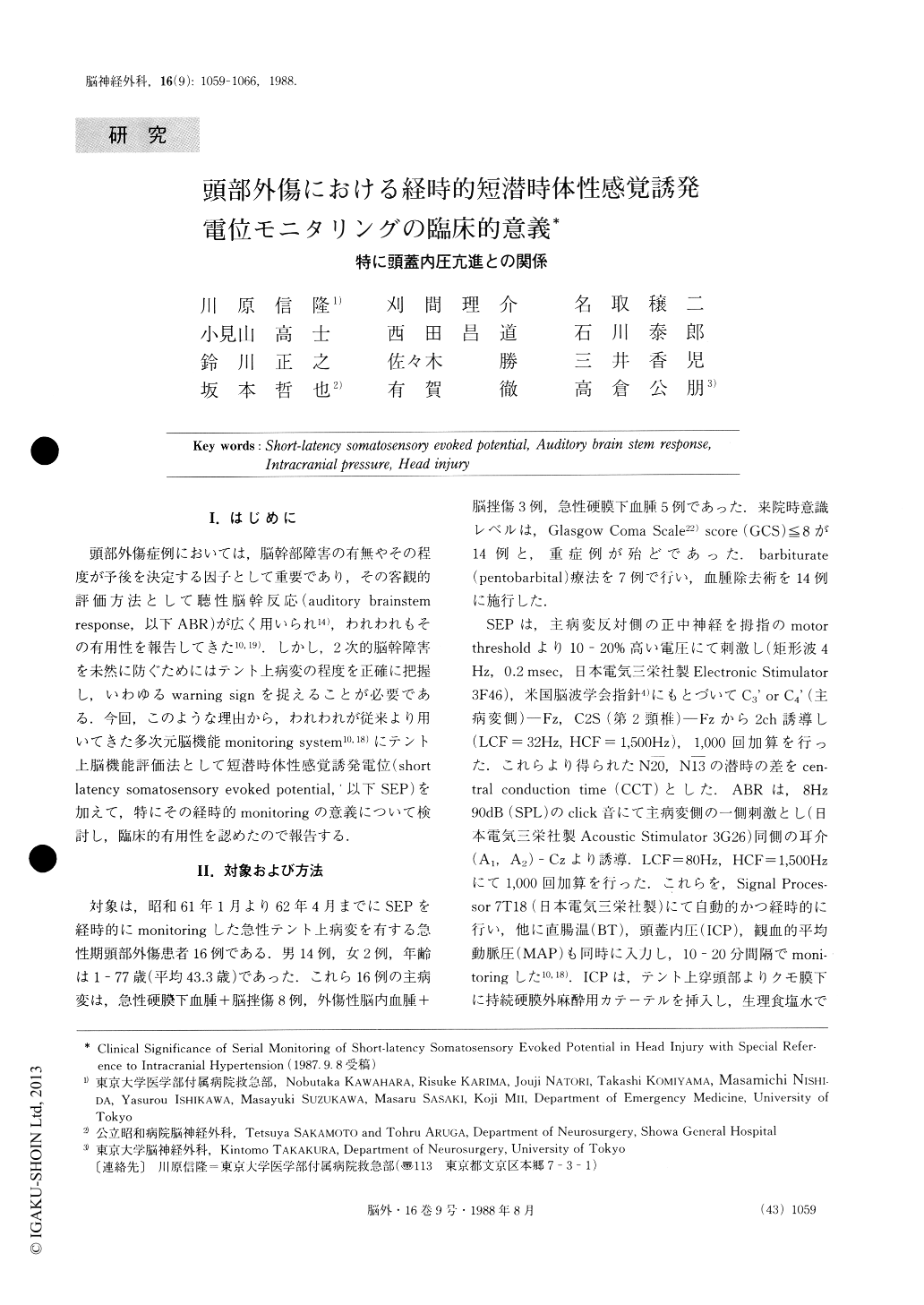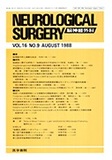Japanese
English
- 有料閲覧
- Abstract 文献概要
- 1ページ目 Look Inside
I.はじめに
頭部外傷症例においては,脳幹部障害の有無やその程度が予後を決定する因子として重要であり,その客観的評価方法として聴性脳幹反応(auditory brainstemresponse,以下ABR)が広く用いられ14),われわれもその有用性を報告してきた10,19).しかし,2次的脳幹障害を未然に防ぐためにはテント上病変の程度を正確に把握し,いわゆるwarning signを捉えることが必要である.今回,このような理由から,われわれが従来より用いてきた多次元脳機能monitoring system10,18)にテント上脳機能評価法として短潜時体性感覚誘発電位(shortlatency somatosensory evoked potential,以下SEP)を加えて,特にその経時的monitoringの意義について検討し,臨床的有用性を認めたので報告する.
Short-latency somatosensory evoked potential (SEP) was serially monitored in head-injured patients and its clinical significance was evaluated in relation to audi-tory brain stem response (ABR), prognosis and other parameters such as intracranial pressure (ICP).
SEP, ABR, and ICP were monitored serially and automatically in 16 patients with acute head injury. Glasgow Coma Scale (GCS) score was equal to or less than 8 in 14 cases. High dose barbiturate therapy was performed in 7 cases and intracranial hematoma was re-moved operatively in 14 cases.

Copyright © 1988, Igaku-Shoin Ltd. All rights reserved.


